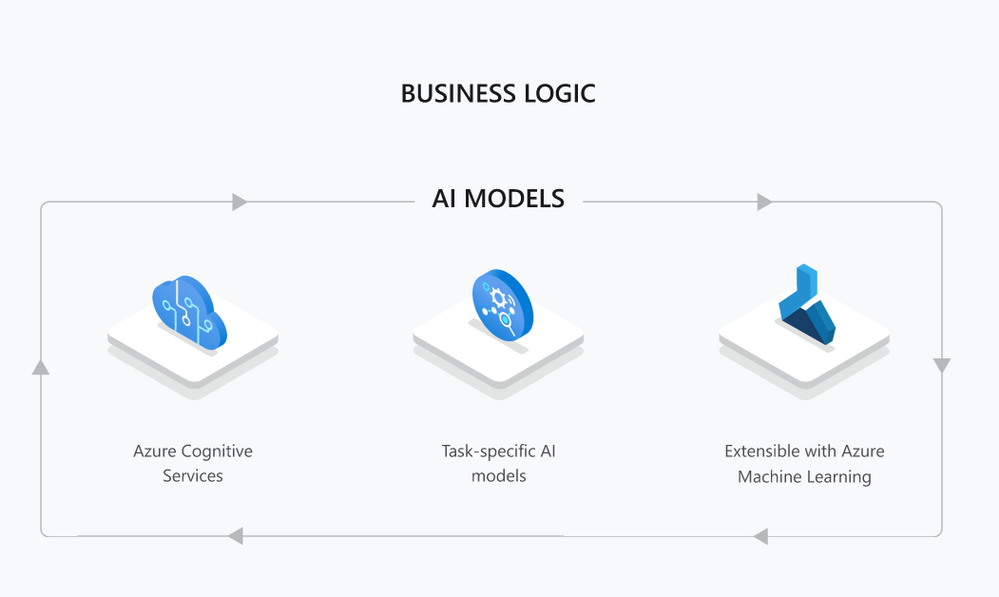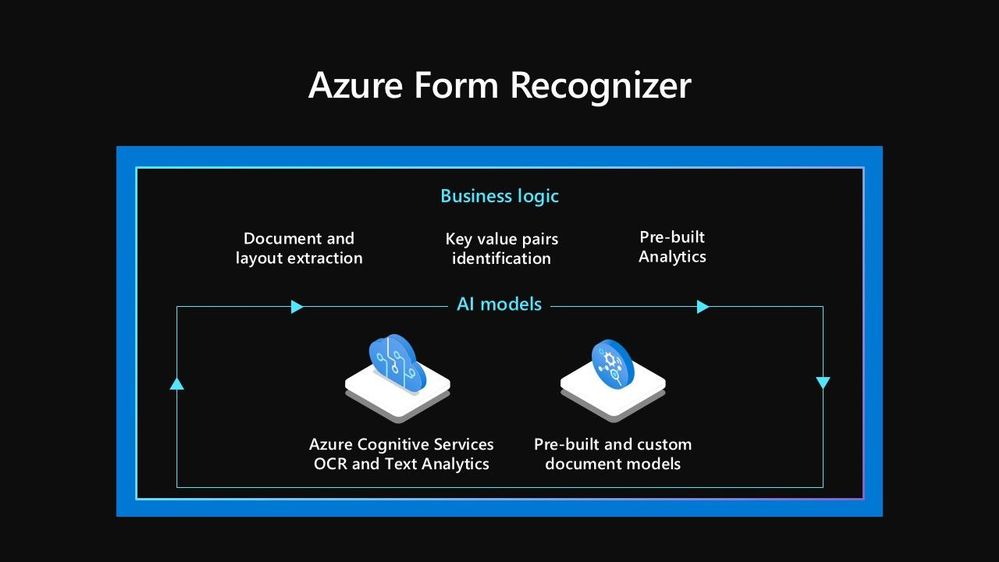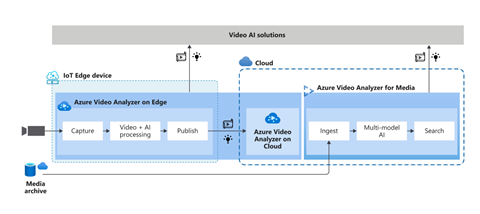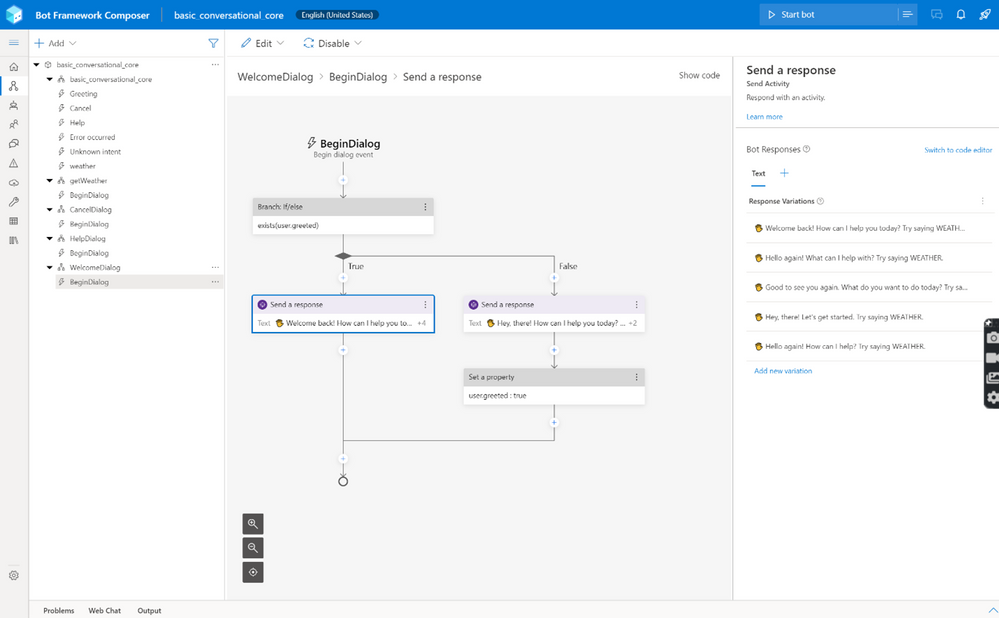This article is contributed. See the original author and article here.
As more organizations widely adopt AI to accelerate their digital transformation, customers have increasingly told us about the need for services that enable faster application of AI to common scenarios, without requiring any machine learning expertise. An example of such a service is Azure Form Recognizer, which automates processing paperwork by bringing together vision and language AI capabilities with business logic to isolate and extract key information. Similarly, Azure Metrics Advisor helps organizations quickly detect and diagnose issues, as well as trigger alert notifications. Customers like Samsung and Chevron are already using these services in their mission critical workloads.
Today we are bringing such services together into a new product category, Azure Applied AI Services. Applied AI Services solve the most common challenges we’re seeing businesses face today, such as processing documents, scaling customer service, searching proprietary archives for pertinent information, analyzing content of all types, and creating accessible experiences. Without having AI expertise, development teams can build AI solutions that meet these needs faster than ever before with Applied AI Services. The category includes Azure Form Recognizer, Azure Metrics Advisor, Azure Cognitive Search, Azure Bot Service, and Azure Immersive Reader. We are also introducing Azure Video Analyzer, which brings Live Video Analytics and Video Indexer closer together.
How do Azure Applied AI Services make faster development possible?

Azure Applied AI Models
Under the hood of Azure Applied AI Services you’ll find the same world-class Azure Cognitive Services: flexible, reliable tools for all language, vision, decision-making, and speech related AI needs. Cognitive Services are the general-purpose building blocks that allow developers to build any AI-powered solution. Cognitive Services offer SDKs (Software Developer Kits), REST APIs, connectors to easily integrate in Azure Serverless or Power Platform, and even user interface(UI) based tools like Speech Studio and Continuous Integration and Deployment (CI/CD) options.
Azure Applied AI Services builds on top of Cognitive Services, combining varies technologies to solve specific problems.
Applied AI Services build on top of Cognitive Services with additional task-specific AI models and business logic to solve common problems organizations encounter, regardless of industry. Digital asset management, information extraction from documents and need to analyze and react to real time data are common to most organizations. In addition, Applied AI Services accelerate development time by providing reliable services that are compliant with our Responsible AI Principles. You can have control of your own data and minimize the latency for mission-critical use cases by running Applied AI Services in containers on your Edge devices.
Let’s dive into an example of a common scenario for AI. Business of all kinds from mom-and-pop shops to mass manufacturing companies have to process various documents. Azure Form Recognizer targets this scenario by extracting information from forms and images into structured data to automate data entry. Form Recognizer builds on top of Cognitive Services’ Optical Character Recognition (OCR) capability to recognize text, Text Analytics and Custom Text to relate key value pairs, like a name field description to the value of the name on an ID. Form Recognizer includes additional task specific models to identify information like Worldwide Passports and U.S Driver’s Licenses reliably and is in compliance with Microsoft’s Responsible AI Principles.
 Azure Form Recognizer Business Logic & AI Models
Azure Form Recognizer Business Logic & AI Models
While the service is highly specialized, various stakeholders ranging from developers new to AI to data scientists can use Azure Form Recognizer. A developer can build complex document processing functionality with the minimum effort using SDKs and REST APIs. A domain expert can then use the very same service to further train a custom model for industry-specific forms with complex structures. A Machine Learning expert can bring their own custom Machine Learning models, optimized for their use case to extend Form Recognizer. The same development options are available across Applied AI Services.
What are the latest updates for Applied AI Services?
Today we are introducing Azure Video Analyzer, bringing Live Video Analyzer and Video Indexer closer together. Azure Video Analyzer (formerly Live Video Analytics, in preview) delivers the developer platform for video analytics, and Azure Video Analyzer for Media (formerly Video Indexer, generally available) delivers AI solutions targeted at Media & Entertainment scenarios. With Azure Video Analyzer, you can process live video at the edge for high latency, record video in the cloud or record relevant video clips on the edge for limited bandwidth deployments. You can analyze video with AI of your choice by leveraging services such as Cognitive Services Custom Vision and Spatial Analysis, open source models, partner models or just your own custom-built models. With Azure Video Analyzer for Media, your video and audio files are easily processed through a rich set of out-of-the-box machine learning models all pre-integrated together, in different channels of the content; with Vision to detect people and scenes, Language to get insights and segment timestamps, Speech to provide close captioning so you can quickly extract insights from your libraries.
 Azure Video AI Solutions
Azure Video AI Solutions
Organizations across the globe are already using Azure Video Analyzer to optimize various processes such as Lufthansa to improve flight turnaround times and Dow to enhance workplace safety with leak detection. Media and Entertainment organizations such as MediaValet use Azure Video Analyzer to extract more value out of their content by finding what they need quickly, scaling across millions of assets.
Azure Metrics Advisor, generally available today, builds on top of Anomaly Detector and makes integration of data, root cause diagnosis, and customizing alerts fast and easy through a readymade visualization and customization UI. Samsung uses Azure Metrics Advisor. In the past, Samsung had relied on a rule-based system in monitoring the health of their Smart TV service. But rules can’t cover all the scenarios and the previous approach generated lots of noise. Using Azure Metrics Advisor, Samsung created a new monitoring solution in China to enhance their previous system and to provide automated, granular root cause analysis that helps engineers locate issues and shorten the time to resolution.
With the latest enhancement to Azure Bot Services, it is easier to build, test, and publish text, speech, or telephony-based bots through an integrated development experience. Varun Nagalia, Director of Unilever HR Systems and Employee Experience Apps: “Una was built on the Microsoft Bot framework foundation. We used the Virtual Assistant templates to streamline the bot’s business logic and handling of user intent in an efficient way. We were able to leverage these templates, adapting them to our business needs and turn around nearly 40 global features in less than 12 months.”
 Azure Bot Service
Azure Bot Service
Solving automation, accessibility and scalability problems with Applied AI Services is faster than ever. When a task is not solved with Applied AI Services, Cognitive Services are all purpose APIs that are available to developers to build their solutions. Check out Azure AI Build Session to learn more and see the demos in action.
Read these blog posts for a deeper dive into the latest from these Azure Applied AI Services:
- Join us at Microsoft Build 2021: aka.ms/Register4Build2021
- Azure Bot Service Blog post: aka.ms/AzureBotServiceBuild21
- Azure Video Analyzer: aka.ms/BuildBlogAVAM
- See what others in the AI community saying about Applied AI Services.
- New to Azure AI? Check out these resources: aka.ms/DevRel/CognitiveServices
- Try Azure AI for Free: aka.ms/StartFreeAzureAI
Brought to you by Dr. Ware, Microsoft Office 365 Silver Partner, Charleston SC.


Recent Comments